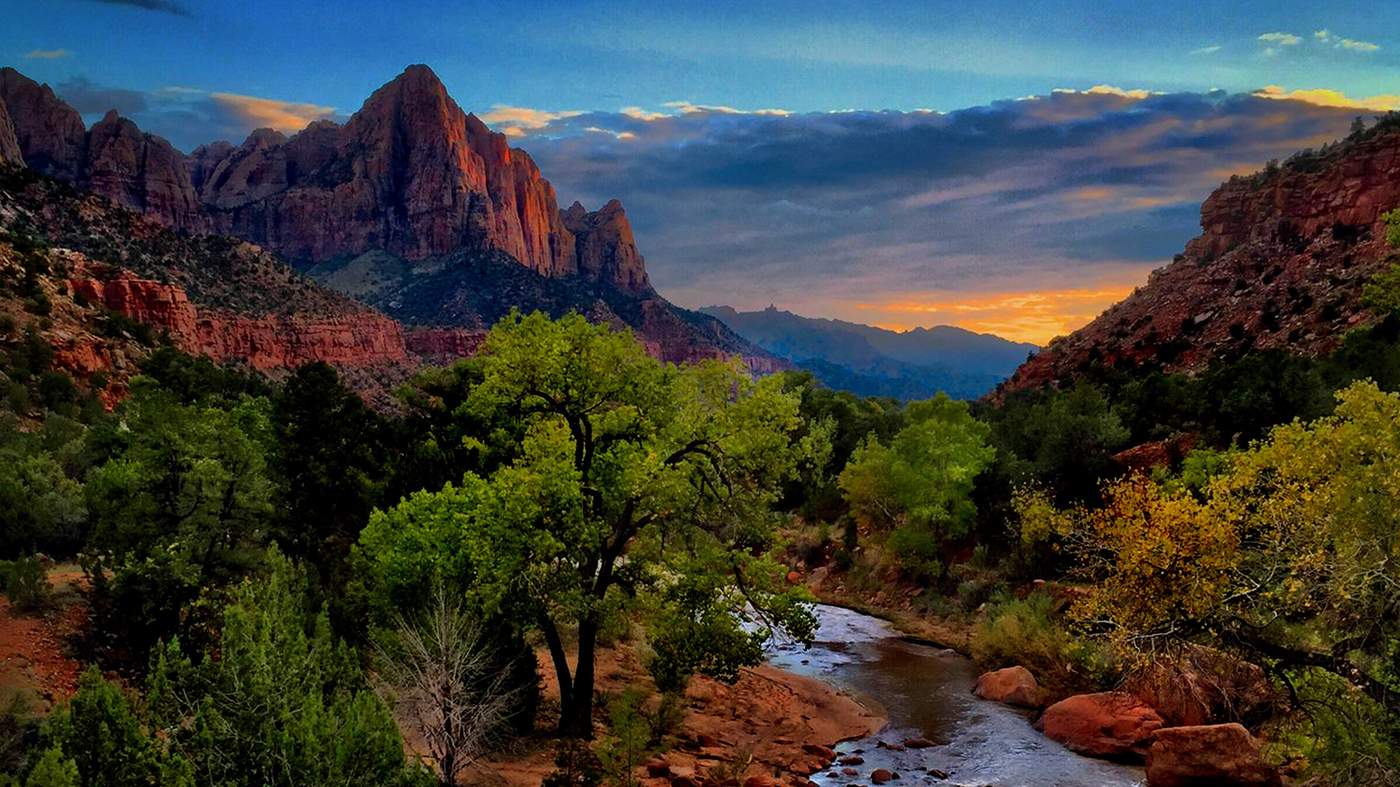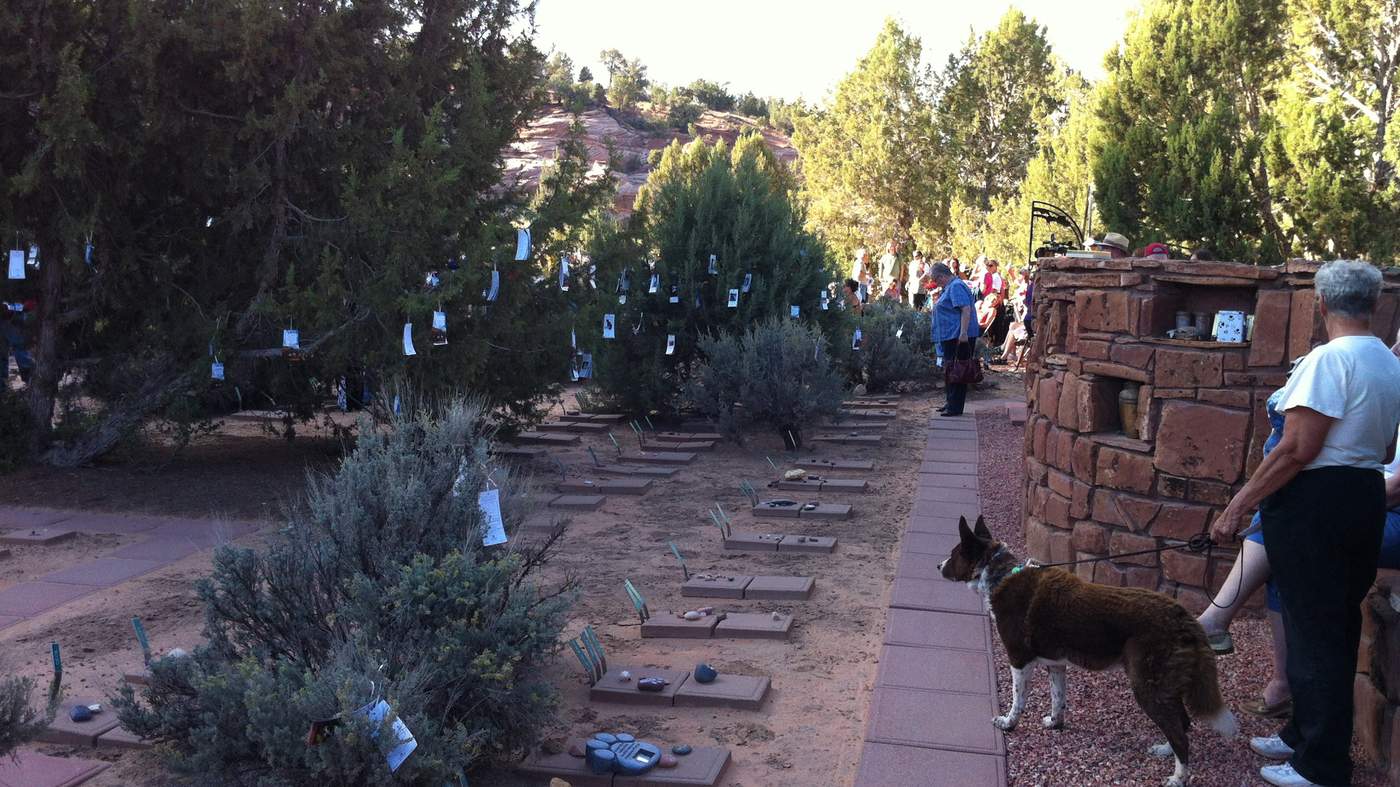I love the American West, especially the high desert of southern Utah, where vast landscapes look more like surreal dreamscapes and giant silhouettes of red sandstone ignite the imagination. The natural beauty of its many scenic overlooks, spectacular sunsets and steep canyons teeming with vegetation and wildlife quench my thirst for outdoor adventure and revitalize my soul.
This region has the highest concentration of national parks and monuments in the country. It’s a paradise for all kinds of outdoor experiences. Here are my top recommendations for sampling this pristine wilderness.
Photo: The 4-mile hike to Observation Point at Zion National Park is a rewarding experience. Stop often to take in the scenery and enjoy the journey.
No. 1: Zion National Park
It took the Virgin River eons to carve this canyon and its surrounding mesas and towers. Stunning in every way, Zion attracts 3.5 million national and international visitors each year. Distinctly different ecosystems abound: cottonwoods and canyon tree frogs at river’s edge; peregrine falcons, elk and quaking aspens along the rim; and desert tortoises and cougars hidden in the canyon itself. Exploring is easy by taking the shuttle buses, which start at the Visitors Center and make numerous stops, each deeper into the canyon.
My favorite thing:
Last autumn I followed the 4-mile-long trail from the floor of the canyon to Observation Point, a gain of more than 2,100 feet. I stopped many times to take photos and catch my breath. It took four hours to reach trail’s end, but the view was worth it. Standing there, I truly felt like I was on top of the world.
After taking in the view, I tied my hiking boot laces extra tight to protect my toes and began the 2-hour descent. I celebrated my return to the valley floor with a calorie-rich beer at the Canyon Lodge. After completing one of the most strenuous hikes in the park, the Squatters Full Suspension Pale Ale turned out to be the best beer I’ve ever had.
Insider’s tip: Hike early in the day, then plan to be at the Canyon Junction bridge before sunset to enjoy an iconic view of the Virgin River with the Watchman peak in the background. Then head down to Springdale, just outside the park, for dinner at the Bit & Spur Restaurant and Saloon. I had sweet potato tamales and couldn’t have been happier.
Photo: The Bryce Canyon Amphitheater.
No. 2: Bryce Canyon National Park
About 85 miles away from Zion is a geological amphitheater containing the world’s largest cluster of eroding sandstone towers, called hoodoos. It’s technically not a canyon — no river carved it — but rather a plateau margin that’s eroded over time. The result is a truly fantastic landscape.
My favorite thing: As much as I love the hoodoos, the plant life at Bryce fascinated me even more. The sandstone continues to erode around the trees, exposing gnarly, twisted roots. It’s easy to imagine some of the trees dancing on their tippy toes, or crouched and poised to spring up and run away. I’d never seen anything like it in all of my travels.
Insider’s Tip: Get there early, in time for sunrise, and stay late. The canyon changes color depending on the time of day and quality of the light. Bryce Canyon is extremely photogenic. I went nuts shooting the trees.
Photo: Grand Staircase-Escalante National Monument in southern Utah is a rugged region that was the last part of the continental United States to be mapped. It requires work for those wanting to see its treasures. Brad Branan/Sacramento Bee
No. 3: Grand Staircase-Escalante National Monument
The designation of “national park” is given to land preserved for its scenic, recreational or educational qualities. A “national monument,” on the other hand, has scientific, historical or cultural value. Larger than the size of some New England states, Grand Staircase-Escalante National Monument is woolly and remote, and the very last place in the continental U.S. to be mapped. All sorts of scientists — geologists, biologists, paleontologists, etc. — come to do research in this area.
My favorite thing: On the edge of this national monument are the Paria Rimrocks Toadstool Hoodoos, only a half-mile hike from U.S. 89 between mile markers 19 and 20. A toadstool is a hoodoo with a boulder balancing on top of it. The rock below the boulder is softer rock that’s eroded away over time. Toadstools are very beautiful and, honestly, pretty weird.
Insider’s tip: After you reach and enjoy looking at the big red toadstool at the end of the trail, keep going. There are quite a few smaller toadstools in the area. Then, after you get back to your vehicle, if you’re heading toward Kanab, look for a small visitor’s center on the left side of the road. It’s the only place for miles that has a restroom.
Photo: A delectable spread at Sego Restaurant.
No. 4: Fine dining in Kanab
Shon Foster built his reputation as a world-class chef at the exclusive Amangiri Resort. Last year he opened Sego Restaurant in his hometown of Kanab. Shon infuses traditional French cooking with local ingredients. One evening in Kanab, I met some dear friends who surprised me with an incredibly memorable birthday gift — a special 9-course chef’s tasting. I still dream about Shon’s panko-encrusted sous vide egg with wilted romaine.
Insider’s tip: Reservations are recommended.
Photo: Visitors come to the Coral Pink Sand Dunes State Park for off-road vehicle driving, hiking and photography.
No. 7: Coral Pink Sand Dunes State Park
Pink-colored dunes estimated to be 10,000 to 15,000 years old are just a short drive from Kanab. Visitors come here for hiking, off-road vehicle driving and photography.
My favorite thing: Life flourishes among the beautiful colored sand, and if you go in the summertime, you may see the Coral Pink Tiger Beetle, which doesn’t exist anywhere else in the world.
Insider’s tip: Sand can get really hot, especially in the summertime. Wear closed-toed shoes.
Photo: Let your imagine run wild as you gaze at the unique geological features at Arches National Park.
No. 8: Arches National Park
Utah’s geology is like nothing anywhere else in the world. One of the best places to experience stone columns, spires, towers and vertical sandstone slabs called fins is Arches National Park. Home to the area’s finest natural arches, it has more than 2,000 of them.
My favorite thing: The names of rock formations — such as Three Gossips, Sheep Rock, Balanced Rock, Parade of Elephants and Devils Garden — give you a clue that Arches is a phantasmagorical place. Be sure to pull off the road and spend time at the observation points; some of the best are Park Avenue Viewpoint and Trailhead, the Courthouse Towers Viewpoint and Fiery Furnace Viewpoint. As for the arches themselves, don’t miss the most famous of all arches in the world — Delicate Arch — you’ve already seen it countless times on vehicles with Utah plates.
Insider’s tip: This is a harsh environment. Take at least a gallon of water per person per day and wear sunscreen and sun protective clothing. This is also a delicate ecosystem. Stay on the designated trails and off the black, biological soil crust. It is a living groundcover and stepping on it causes damage that lasts for many years. Also, avoid Arches at peak tourist times. Last Memorial Day weekend, traffic gridlock forced the first temporary closure of the park.
No. 9: Sego Canyon
With Utah’s unique geology, you might think you’re on another planet, but things are about to get even weirder in Sego Canyon, which features pictographs (drawings or paintings) and petroglyphs (peckings or carvings into the rock) created by three different Native American cultures. Some are estimated to be 4,000 years old.
My favorite thing: The oldest of these groups of rock art, called the Barrier Canyon style, depicts human-like creatures with bug-like heads or maybe masks and antennae. Some are wearing earrings. These figures are legless and have missing or snake-like arms. Were they inspired by the fantastic landscape, hallucinogens or extraterrestrial visitors? Whatever the case, they made the hairs on the back of my neck prickle.
Insider’s tip: Here’s your chance to take the road less traveled. Sego Canyon’s just north of Arches National Park, off Interstate 70 near Thompson Springs. It’s a remote and unassuming place; follow the small signs on the dirt road and stay off private property.
Photo: Bryce Canyon National Park's geological amphitheater contains world's largest collection of eroding sandstone towers, called hoodoos.
MORE INSIDER’S TIPS
• Fly into Las Vegas and renting a car is usually less expensive than going through Salt Lake City.
• Take plenty of photographs and leave only footprints on the designated trails. Finding a power bar wrapper along a trail, or worse, encountering graffiti in the sandstone, spoils the experience of being in the wild.
• Carry a gallon of water per person and stay hydrated. Also carry food, sunscreen, rain gear, compass and guidebook.
• Wear hiking boots, layers, a hat and sunglasses. Even in summer, bring warm clothes. At relatively high elevations, the nights get chilly.
• For steep hikes or for hiking through water, such as The Narrows at Zion, bring hiking poles. A camera tripod will also work.
• Check weather reports and pay attention to the potential of flash floods. Stay away from slot canyons if flash floods are possible.
• Stay out of the midday heat, if possible. I was at Arches last June when it was about 100 degrees and sunny. I could feel the hot wind drying out my skin.
• For the best photography, try to shoot in the morning and evening for more color and dramatic shadows.
• Use the restroom before you start a long trail.
• Pets aren’t allowed on the trails. Best to leave them at home.
MORE INFORMATION
• Zion National Park: www.nps.gov/zion; 435-772-3256.
• Bit & Spur Restaurant & Saloon, 1212 Zion Park Blvd., Springdale, Utah: bitandspur.com; 435-772-3498.
• Bryce Canyon National Park: www.nps.gov/brca; 435-834-5322.
• Grand Staircase-Escalante National Monument: www.ut.blm.gov/monument; 435-644-1200.
• Sego Restaurant, 190 N. 300 W., Kanab, Utah: http://www.facebook.com/segoutah; 435-644-5680.
• Best Friends Animal Sanctuary, 5001 Angel Canyon Road, Kanab: bestfriends.org; 435-644-2001
• Dreamland Safari Tours, 4350 E. Mountain View Drive, Kanab: dreamlandtours.net; 435-664-5506.
• Coral Pink Sand Dunes State Park: stateparks.utah.gov/parks/coral-pink/; 435-648-2800.
• Arches National Park: www.nps.gov/arch; 435-719-2299.
• Sego Canyon: www.blm.gov, search “Sego Canyon”; 435-259-2100.











Please confirm the information below before signing in.